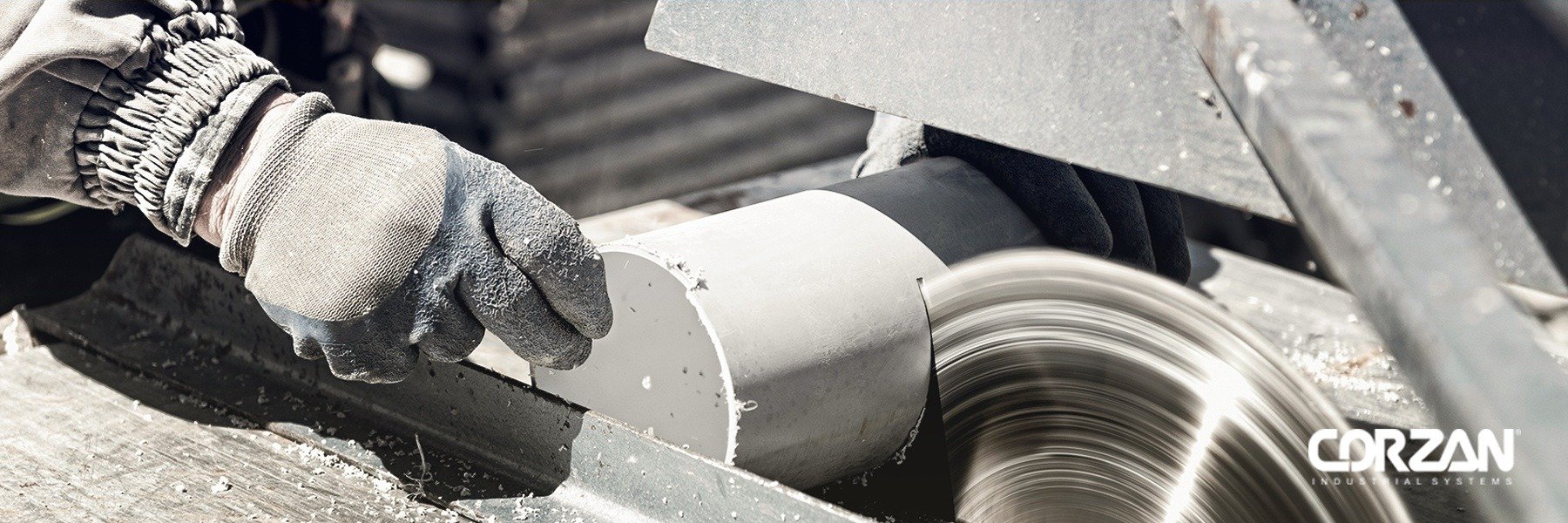The Dos and Don’ts of Cutting CPVC Pipe
One of the benefits of working with chlorinated polyvinyl chloride (CPVC) pipe is that it can be cut with a variety of different tools that don’t require any electricity or heat. However, different cutting methods are preferred over others, depending on the application.
When cutting CPVC pipe, it is important to make a square, flat cut. An uneven cut limits the bonding area and weakens the fitting.
To help you make the best possible cut, we’ve put together the following dos and don’ts when cutting CPVC pipe in different situations.
Safety First
Cutting tools can be dangerous. Every method to cut CPVC pipe involves tools that use a cutting blade of some type. Each of these tools can cause serious harm if not used properly which is why it’s important to follow these safety measures first.
Do: Always be aware of your hands.
When cutting CPVC pipe, a good cautionary measure is to wear cut resistant gloves. Always be aware of where your hands are. This will limit the risk of bodily harm.
Do: Protect your eyes.
Wear safety glasses, goggles, or other eye protection when cutting CPVC pipe, as fragments can be ejected from the area being cut.
Solvent Welding
Solvent welding is a process that joins CPVC pipes using solvents and resin to chemically fuse the pipe and fitting together at a molecular level. For most applications, Corzan® Industrial Systems recommends this type of joining for CPVC pipes because it creates one continuous piece of plastic.
To ensure solvent cement is applied properly throughout your system, follow these steps to prevent irregular cuts and maximize the bonding surface area.
Do: Use a chop saw with a fine-toothed blade.
Most professionals use a circular or chop saw with a fine-toothed blade on job sites to cut CPVC pipes. This is the preferred method because chop saws provide a solid fence to square the edge of the pipe for a clean, even cut. Although CPVC pipe can be cut with ratchet or tube cutters, we recommend a chop saw for most installations. A wheel cutter or a fine-toothed handsaw and miter box could also be used to cut CPVC pipe in situations where electricity isn’t available.
Do: Smooth the cut end of the CPVC pipe.
Burrs and filings can prevent proper contact between the pipe and fitting, and cause unnecessary stress. Ensure your cut pipe is burr-free by removing them from the outside and inside of the pipe with a chamfering tool or file.
Do: Add a slight bevel to the end of the pipe.
Most important for solvent cement applications is the use of a bevel tool. A bevel will guide the entry of the pipe into the fitting. For pipe sizes 2 in. and larger, a 10 to 15° chamfer of 3/32 in. is recommended.
Don’t: Use a dull or broken cutting blade.
Mechanical Couplings
Mechanical couplings are metal clamps with rubber gaskets in the middle. These fittings enable you to connect one pipe to another without any extra resistance. Mostly used in water delivery, this type of joining is more expensive than solvent cement, but quicker because you don’t have a cure time. For cutting CPVC pipe that is going to be joined by mechanical couplings, follow these guidelines.
Do: Ensure you use a fine-toothed saw blade or a wheel cutter with plastic cutting wheel.
You need a clean square cut to maximize the bonding surface.
Do: Use a plastic groove cutter.
Mechanical couplings use grooves on the pipe ends, providing a sealing surface for the gasket. The gasket seals the pipe ends, trapping fluids within as it is enclosed by the coupling housings. Those housings are then held together by nuts and bolts tightened with a wrench. To make these grooves, use a plastic groove cutter for square, precise cuts.
Threading
CPVC pipe can be joined through threaded end connections. If cutting threaded CVPC, consider these tips for an accurate cut.
Do: Use a fine-toothed saw blade to cut CPVC.
When using a saw, ensure it has a fine-tooth blade with at least 16 to 18 teeth per in. for a square cut.
Do: Ensure the CPVC pipe is squared with a miter box.
Use a miter box to secure your handsaw during your cut.
Do: Smooth the cut end of the pipe with a knife or similar tool.
Handsaws can often leave plastic burrs or filings that affect pipe joining and put stress on the fitting. Use a chamfering tool or file to smooth sharp edges and remove burrs from outside the pipe.
Do: Use specific dies when threading by hand or machine.
When using power threading machines, ensure your die has a 5° negative rake and a 5° to 10° negative front rake when pipes are threaded by hand.
Don’t: Use saw-toothed jaws to secure the pipe during threading.
The CVPC pipe should be held in a pipe vise to avoid damage to the outside area. Consider a rubber sheet or other type of protective material to protect the pipe from the rough edges of the vise.
Don’t: Use a lot of force when using power threading equipment.
The dies should not be driven at high speeds or with heavy pressure.
Don’t: Use worn or dull dies for threading.
The dies for cutting threads on Corzan CPVC pipe should be clean and sharp. The die you use should only be used with plastic materials.
Cold Weather
Take extra precaution when cutting CPVC pipe in cold weather. Low temperatures can cause the pipe to become brittle and crack under pressure when cutting. For best results:
Do: After performing a cut, check the end for potential new cracks.
If there are any, recut the pipe two inches beyond the visible end of the crack. Once the pipe has been inspected and is free of cracks, move on to joining.
Don’t: Use Ratchet cutters to cut CPVC pipe in cold weather.
Ratchet cutters are not recommended in cold environments because they compress the pipe increasing the risk of cracking the pipe. Best results are obtained by using fine-toothed saw blades.
Installation Best Practices
Proper installation of CPVC piping systems is critical to the performance of the system. An important step in piping system installation is an accurate cut.
Successfully cut different lengths of CPVC pipe for system installation with these best practices:
Use fine-toothed saw blades for best results.
Ensure your cut is square and accurate and use a blade with little to no offset (0.025 in. max). Also keep your cut clean and use a fine-toothed saw with 16 to 18 teeth per inch.
Use circular power saws or band saws.
Ensure your power saw operates at 6,000 RPM, and use your band saw at 3,600 ft./min with ordinary hand pressure.
Use a guide to ensure a square cut.
We strongly recommend using a miter box or other guide device for manual operation.
If you have any questions about cutting Corzan CVPC pipe, our team of product and engineering specialists is ready to talk.


